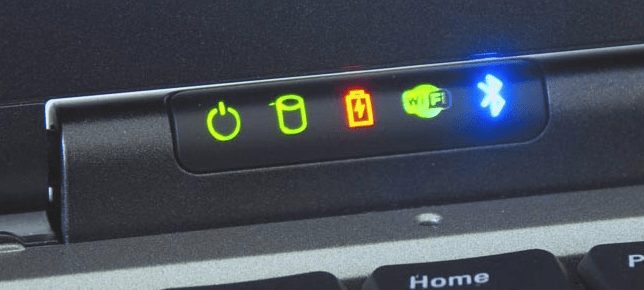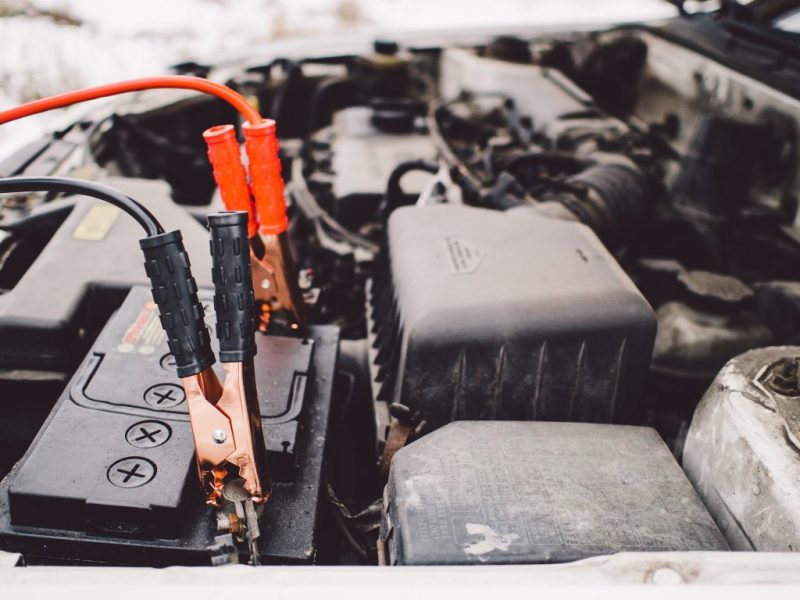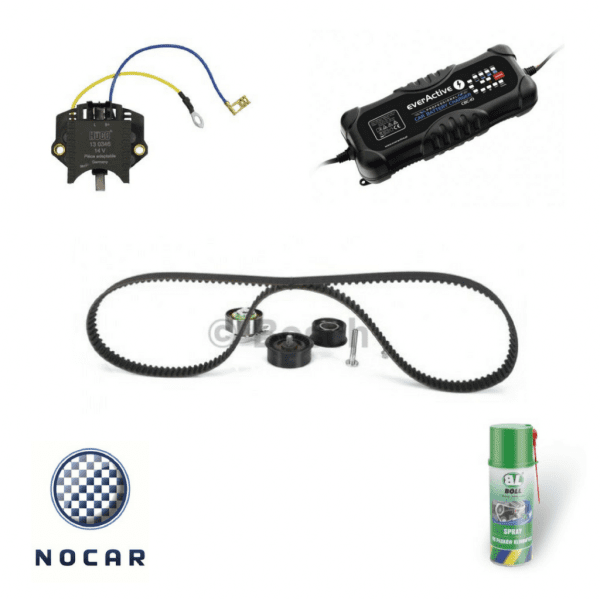
Charging light is on or blinking - why?
Content
When the red light on the dashboard comes on, the driver's pulse quickens. Especially when the battery charging indicator is on. The question of whether it will be necessary to interrupt the movement depends on the nature of the breakdown. Check what could be the reasons for its appearance.
What will you learn from this post?
- What are the reasons for the failure of the charging system?
- How does the generator work?
- What to do when the charging light comes on?
Shortly speaking
If the charging indicator on the dashboard flashes or lights up, it means… no charging! The problem may be caused by replacing the battery. However, most often this will happen when the generator fails. Worn brushes or a faulty voltage regulator can cause interruptions in charging. This could be the beginning of a more serious breakdown, so don't ignore them! Meanwhile, a break or loosening of the V-belt or a burnt-out stator winding will completely deprive you of the right to continue driving.

More and more components in cars are saturated with electronics, so a lack of electricity can result in a serious malfunction, not only forcing you to stop moving, but, as a result, immobilizing your car for a long time. The main problem can arise as soon as you get behind the wheel. If the battery is discharged, the engine will not start. However, this is usually the case. the generator is to blame.
What is a generator?
The battery current is supplied when the engine is started. However, a battery is simply a battery that stores electricity but does not produce it. It is charged by an alternator. The alternator operates in a reversible motor mode. If the engine converts electrical energy into mechanical energy that drives the car, the generator converts that energy back into electricity, which is then stored in the battery and distributed to all the components in the vehicle that require it. Power is supplied from the engine to the generator via the V-belt. The role of the armature is played by the wound stator, which interacts with the rotor, which induces an alternating current, which is then converted into a diode bridge into direct current, because only this can be used by the battery. The rectifier circuit is controlled by a voltage regulator.
Flashing
If the indicator lamp flashes, the battery does not charge continuously. Worn generator brushes are usually the reason for interrupted charging. In this case, it is best to completely replace the entire generator. However, the new one is quite expensive and scares off most drivers, and when used, it may not last long. An alternative is to buy a generator after regeneration with a guarantee of the service that performed it.
The blinking of the charging indicator can also be caused by voltage surges. It means that the regulator fails. In a working regulator, the voltage can fluctuate within 0,5 V - no more (the correct one is between 13,9 and 14,4 V). It must be able to maintain the voltage at this level even when an additional source of load, such as light, appears. However, if the regulator drops voltage as the engine speed increases, it's time to replace it. In any case, system performance degrades over time. The replacement cost is low, so it's worth investing in the original regulator and making sure it doesn't fail.
Blinking of the indicator light is a sign of a malfunction, but does not prevent further driving. However, this symptom should not be ignored as soon as possible. can lead to more serious damage... It is best to drive to the garage as soon as possible and fix the cause of the problem.
Indicator light is on
When the charging indicator is on, it means there is no battery left. no generator power... In this case, the car only uses the electricity stored in the battery. When it is depleted, and thus the car is immobilized, it can take several hours or even minutes. Unfortunately, a complete discharge can permanently damage the battery.
The reason for this failure may be stator damage, for example, as a result of a short circuit. Unfortunately, it cannot be replaced - only a new generator will help. Fault is easier to fix loose or broken drive belt... The purchase price for this part is low and you can replace it yourself. Even if the belt is not showing signs of wear yet, remember to replace it with a new one every 30 XNUMX hours. km.
These symptoms can occur when the belt is in good condition, but the tensioner, which is responsible for proper tension and anti-slip, does not work. Here, the cost is slightly higher, and it is not always possible to replace with universal keys. Remember that it is also recommended to change the belt when replacing the tensioner. This way, you can be sure that both elements will work smoothly.

Of course, the reason for the blinking or glowing of the charging indicator can also be ordinary. faulty wiring... It's best to play it safe and respond to symptoms as soon as possible, as refusing to charge can effectively immobilize your vehicle. Take your charger with you just in case, with which you recharge the battery, just to drive into the workshop. You can also get an easy-to-use battery charge indicator that plugs into the charger connector so you can check your battery without looking under the hood.
All necessary elements of the charging system and other car accessories can be found on the website I avtotachki.co.
Would you like to know more about the charging system in your car? Read our entries in the category ELECTRICAL SYSTEMS and BATTERIES - TIPS AND ACCESSORIES.

